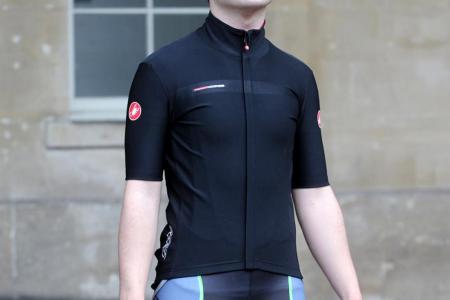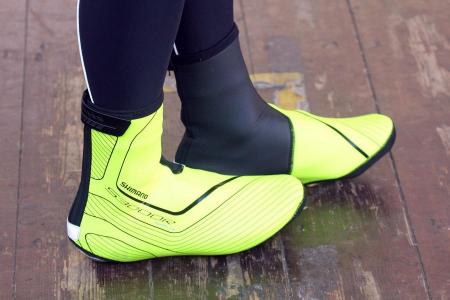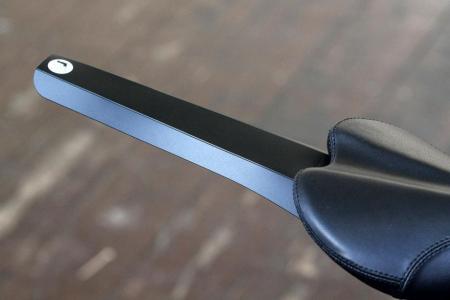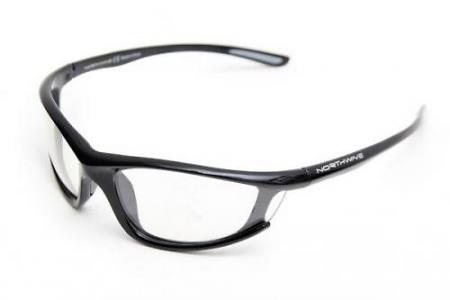- News
- Reviews
- Bikes
- Accessories
- Accessories - misc
- Computer mounts
- Bags
- Bar ends
- Bike bags & cases
- Bottle cages
- Bottles
- Cameras
- Car racks
- Child seats
- Computers
- Glasses
- GPS units
- Helmets
- Lights - front
- Lights - rear
- Lights - sets
- Locks
- Mirrors
- Mudguards
- Racks
- Pumps & CO2 inflators
- Puncture kits
- Reflectives
- Smart watches
- Stands and racks
- Trailers
- Clothing
- Components
- Bar tape & grips
- Bottom brackets
- Brake & gear cables
- Brake & STI levers
- Brake pads & spares
- Brakes
- Cassettes & freewheels
- Chains
- Chainsets & chainrings
- Derailleurs - front
- Derailleurs - rear
- Forks
- Gear levers & shifters
- Groupsets
- Handlebars & extensions
- Headsets
- Hubs
- Inner tubes
- Pedals
- Quick releases & skewers
- Saddles
- Seatposts
- Stems
- Wheels
- Tyres
- Health, fitness and nutrition
- Tools and workshop
- Miscellaneous
- Cross country mountain bikes
- Tubeless valves
- Buyers Guides
- Features
- Forum
- Recommends
- Podcast
feature
 Survival tips for cycling in the rain
Survival tips for cycling in the rain 9 top survival tips for cycling in the rain — essential kit and equipment choices to conquer the wettest rides
No one really enjoys riding in the rain. Or do they? One thing's for sure, it's unavoidable in the UK if you want to keep cycling through the winter.
If you’re keen to not let the rain stop you cycling, here are some tips that will help you survive, and possibly enjoy, riding in the rain this winter.
1. Waterproof jacket and tights
An absolute essential if you want to go cycling in the rain is a waterproof jacket. Fabric technology and garment design have come on leaps and bounds in the past few decades (Gore-Tex first introduced its waterproof jacket 30 years ago) and there’s now a huge choice of rain jackets that will keep you from getting soaked through, at a range of prices to suit different budgets.
The challenge with waterproof jackets for cycling is not just keeping the rain out, but providing the necessary breathability to allow the heat your body generated through exercise to escape. Early waterproof jackets were known as ‘boil in the bag’ affairs, because though they might have kept the rain out, you would get soaked on the inside from your own sweat. Not ideal.
Fabric technology has really improved the balance of rain protection and breathability and modern cycling jackets are very good at dealing with the tricky task of keeping a hard-working cyclist dry, and most not offer a fine balance of rain protection and body heat management.
- The best waterproof cycling clothing
In recent years, we’ve seen a new solution to tackling riding in wet weather. The now iconic Castelli Gabba jacket is the best example of a new approach to dressing for wet rides. It's made from a waterproof fabric with a really close fit and good breathability. It's not completely waterproof, the seams aren't taped, but it's ideal for showers rather than prolonged downpours, and it'll keep you warm to. The Gabba has really caught on, and now quite a few manufacturers offering similar tops now.
While it’s obviously important to keep your top dry when it’s raining, you also need to consider your legs. Cycling in the cold and wet makes it harder for the muscles to operate at their optimum, and your performance can suffer as a result. Keeping your legs wrapped then up is very sensible.
Thin Lycra doesn’t offer much rain protection but there’s a new breed of winter tights that are treated with a water repellent finish that will keep your legs drier for longer, such as Sportful’s NoRain and Castelli’s NanoFlex tights and leg warmers.
- The best cycling clothing to keep you warm this winter
For commuting a pair of waterproof trousers might be a more suitable option, and can be worn over regular cycling or casual clothing, as and when needed. Fit needs to be good, you don’t want them flapping in the wind or potentially getting caught in the drivetrain.
2. Dry feet - overshoes, waterproof socks and winter boots
There’s no avoiding it, your feet are going to get wet: they’re right in the firing line of spray from the front wheel after all. Invest in a pair of waterproof overshoes and you should be able to keep your feet a lot drier for longer.
- The best cycling overshoes — what to look for and 12 great choices
Neoprene overshoes are a good option. They don’t keep the rain out but do prevent your feet getting cold when they are wet. For more protection look for an overshoe treated with a Gore-Tex finish or similar membrane for really wet conditions.
Overshoes are available to fit most types of shoe, road and mountain bike soles are catered for. They also double up as extra insulation when the mercury drops, and they're reasonably affordable.
The other choice, and one that many people combine with overshoes or winter boots is a pair of waterproof socks. SealSkins is the most well-known maker of waterproof socks, but others are available too. They’re thicker than regular socks so you need to check you can fit them with your shoes.
- Essential wet weather cycle clothing and gear
The best wet weather protection is probably a dedicated winter boot. Like a regular cycling shoe with a beefed up waterproof upper and some sort of membrane liner, they are the best choice for ensuring your feet stay dry and warm. They’re a more expensive option than overshoes but if you plan to do a lot of cycling through the winter, the investment might be justifiable. If you’re just cycling once or twice a week, overshoes are probably better value for money.
3. Waterproof gloves
What’s worse, cold feet or cold hands? Neither are very pleasant, so right up there with protecting your feet should be investing in some gloves that will keep your hands dry. When your hands get wet they get cold a lot quicker, and numb hands are very unpleasant - I’ve cut rides short when I’ve lost all feeling in my hands before.
The choice for waterproof gloves varies hugely, from neoprene gloves that retain warmth even when wet. Bigger winter gloves feature a waterproof lining or a soft shell construction, but they can be bulky or limit dexterity.
One of my favourite tricks for long rides when I know it’s going to be wet is to take a spare pair of gloves sealed in a plastic bag and change halfway round the route.
4. Keep your head dry
A dry head is a happy head. Your head is obviously first in line to get pelted by the rain, and a well-ventilated lightweight helmet doesn’t offer much shelter. Wearing a cap underneath it, or a cover over the top, will keep your noggin dry.
A cotton cycling cap offers some protection, with the peak serving as a useful gutter to direct rain from your eyes. Many clothing companies now make cycling caps from waterproof fabrics, which work brilliantly when it’s raining really heavily, but breathability can suffer from some of them.
Another option, and probably one that will appeal more to commuters and city cyclists, is a helmet cover. They’re designed to fit right over the entire helmet with elastic holding it in place. They’re usually covered with reflective details so serve an additional purpose of helping you to stand out on the dark unlit roads.
The other option is one of the aero helmets with all the air vents blocked in, or closeable vents, such as the Bell Star I tested last year. Close the vents to keep cold air and rain out.
5. Mudguards
Like or loathe them, mudguards are designed to protect you from road spray from the wheels, and can make a huge difference to preventing you getting soaked through. Mudguards need to be embraced for winter road cycling, once you've tried them, you'll never go back.
- Buyer’s guide: The best mudguards to keep you dry when the weather's not
You might get wet from the falling rain, but mudguards will prevent your feet, legs and bum getting a soaking when splashing through puddles. They also keep all the mud and other road dirt off your bike and body, so you don’t look like you’ve been out mountain biking when you get home, covered from head to toe in mud.
Mudguards vary from simple plastic clip-on fenders, which offer limited protection but will fit any bike quickly and easily, to proper full-length mudguards. These offer the best protection, as they wrap much more of the wheel and track the front wheel when steering. Your bike will need mounts and adequate clearance between the tyre and frame to take them, though.
6. Glasses
It helps to be able to see where you're going, and when it's raining heavily and water is being sprayed up from the road, your vision can easily become, well a bit waterlogged.
- The best cheap cycling sunglasses
A pair of cycling glasses with clear lenses are a really good way of shielding your eyes when cycling in the rain. They also keep mud and grit out of your eyes, especially handy if riding on a wheel. Some glasses have interchangeable lenses and a yellow tint can boost contrast in low light.
7. Be seen - fit some lights
Even if you’re riding during the day, rainy weather is often accompanied by dark clouds and low light levels, and that can mean restricted visibility.
A set of small blinking LED lights, either just a rear one of a front and rear set, can ensure that other road users stand a better chance of seeing you in murky weather.
- Your guide to the best front lights for cycling + beam comparison engine
8. Avoid punctures - change your tyres
Getting a puncture isn’t much fun but it’s even less fun when the rain is pelting down on you. Swap your lightweight race tyres for durable tyres with a puncture belt and you’ll lessen the risk of getting a puncture.
- The best tyres to keep you cycling through winter
You’re more likely to puncture in the rain because debris gets washed out of the gutter into the road, and water acts as an astonishingly good lubricant for sharp flint and glasses to slice through a bicycle tyre. That’s why I prefer to ride tubeless tyres through the winter.
Some tyres are made for the winter with a different rubber compound, intended to provide increased traction on wet roads. Ignore the tread pattern on a bicycle tyre, it makes no difference. Consider fitting the widest possible tyre your bicycle will accommodate. You can run lower pressures and benefit from a larger contact patch, increasing the traction.
Got any tips we've missed? Stick 'em down in the comments below and they might make the next update.
David worked on the road.cc tech team from 2012-2020. Previously he was editor of Bikemagic.com and before that staff writer at RCUK. He's a seasoned cyclist of all disciplines, from road to mountain biking, touring to cyclo-cross, he only wishes he had time to ride them all. He's mildly competitive, though he'll never admit it, and is a frequent road racer but is too lazy to do really well. He currently resides in the Cotswolds, and you can now find him over on his own YouTube channel David Arthur - Just Ride Bikes.
Latest Comments
- Bmblbzzz 12 min 25 sec ago
Worth noting that the abovementioned Fadumo has so far been a dynamo for the Green vote in East Bristol (and is generally of an activist and active...
- Keesvant 32 min 17 sec ago
Specialized tyres are an acronym for flat tyres. 2 guys in my group used them, punctured on every ride.
- FionaJJ 34 min 4 sec ago
Exactly, and while that might be bad for the bike manufacturing/selling industry, it doesn't automatically correlate to a problem for the cycling...
- Bmblbzzz 38 min 57 sec ago
The Road.cc journo has definitely passed his "find interesting things to say about a very boring product" test!
- Rendel Harris 58 min ago
No idea whether the truth, the whole truth and nothing but the truth is being conveyed in this particular instance but I do recall standing...
- mdavidford 1 hour 39 min ago
What's relevant probably depends on the individual's use case....
- mdavidford 1 hour 56 min ago
'should' these days - only the MUSTs and MUST NOTs are shouted.
- Sriracha 2 hours 38 min ago
At last a light worthy of the hack reviewer's cliché, "pumps out the lumens."
- mctrials23 3 hours 42 min ago
Thats not a defence (ironically). Everyone is paid to do their job. Some peoples job is to destroy the environment and ruin the future of billions...







Add new comment
47 comments
I end up taking off glasses in the rain, it's hard to see with them on
Depends on the rain. There's the rain that sticks around as big globs on the glasses distorting everything you're trying to see, but your naked eyes will probably be OK with; There's the mizzly stuff that soaks through your eyeballs if you're not wearing glasses, but you can see through fine if you are; There's the stuff that's like needles being fired in to your eyes that you definitely need protection from; Etc.
Me too. It's worse when it's dark as the raindrops focus headlights glare.
Glasses: I wear them all the time, not just in the wet. All sorts of debris can be flicked up or fly into your eyes. Directly, that can cause damage to your eyes; indirectly, it could distract you or blind you at a crucial need of control, such as a winding descent or approaching/through a junction.
You're issued one pair of eyes, but glasses can be cleaned or replaced. I think they are a more significant contribution to rider safety than a helmet.
...because otherwise I can't see where I'm going!
Cotton cap? Terrible recomendation and will get wet and cold. Not as good as a thin wool beanie, which will help keep your head warm even when wet.
I prefer a buff. Very flexible to use in the cold and warm. I've long lost the pads from my helmet, and the buff replaces them nicely. Keeps me warm, and I can wet it and use it to cool down in summer.
Don't buy water-soluble brake pads off the internet, as I appear to have done...!
You’ll never prevent getting (at least a bit) wet. What you have to try and stop, is getting cold. A bit of a soaking, by itself, never really killed anyone. Hypothermia kills people. I have some wet weather kit, it’s really primarily designed to increase visibility, and keep me warm. You don’t have to spend loads either. I’ve got a load of kit from places like Aldi / Lidl and Decathlon, and it all works well, and didn’t cost much ( relatively speaking ). The overshoes from Decathlon are a particularly good buy.
I’ve got a load of kit from places like Aldi / Lidl and Decathlon
I agree completely. I was on a mega-wet ride for 2 1/2 hours last Friday, not that bad with a lot of excellent Aldi kit. The wool beanie is especially useful, being warm when wet
'There is a point of view that says you should spend only a reasonable sum to fend off the worst of the weather and after that, just relax and accept that some bits of you are going to get wet. '
I like that. There's also a point of view that says you've chosen an outdoor activity and you live in Britain, just relax and accept that some bits of you are going to get wet. Skin's waterproof, after all
A pair of these in the office certainly helps morale when preparing for that return journey though.
https://www.ellis-brigham.com/sidas-drywarmer-pro-usb-715068?FT20Feed=00...
If your first thought is "Today I need to wear waterproof overtrousers and waterproof socks as well as a jacket", go with that instinct and don't second-guess yourself!
(Watching my clothes veeery slowly dry on the radiator...)
Waterproof trousers - check.
Waterproof coat - check
Waterproof shoes and socks - it's only a couple of miles, I'll be fine
Narrator: His shoes and socks were not fine.
It's that special moment when you stop pedalling and can actually feel a little wave of water move backwards in your shoe...
As I was getting ready to leave the house, I thought "should I grab my winter boots (Northwave Arctics) as they're waterproof" but couldn't be arsed and just wore my summer shoes with a nice air grill over the toes to let as much rain in as possible.
Can anybody recommend or suggest waterproof overshoes for my mighty size 13 feet that won't need a second mortgage. You'd think that with feet the size of canoes, I could walk on water but it doesn't keep the water out when out on the road.
I'm road cycling with Lake CX217 shoes in a EU50. I've got a pair of Altura neoprene overshoes size eu49 but they are incredibly tight and I'm not sure how long they will last at full stretch.
Just finding it hard to search based on size available, so if there is anyone with a similar experience who can help, please shout out.
Cheers
I wear XL Endura Luminites over my size 11 Goretex trainers for commuting.
They're designed for commuters to go over normal shoes, hence made a bit bigger, they also go up to XXL so should fit your size 13 road shoes.
The downside is they're not as stretchy as neoprene so likely to be less aero than something desgined for road shoes.
Are they a good fit for your 11?
I have struggled to find something that fits a 47 as they ones I've have tried size up smaller.
"SealSkins is the most well-known maker of waterproof socks, but others are available too..."
Others, like Sealskinz? You'd think they'd sue the other lot!
Skin is waterproof; enjoy the ride!
For commuting on bikes with a flat handlebar and in a sit-up and beg position I found a heavy, waxed cotton, Carradice rain cape superb. It was still quite warm, but better than a jacket thanks to the airflow coming from underneath. It also kept the worst of the weather off of my legs and feet, dry shoes for the ride home.
I did not like using it with my drop bar bike though. The different riding position left material bunched up between my hands and it just seemed to be always in the way.
Spare socks as well as gloves.
Last summer I was caught in a downpour as I left work, feet wet in the first 2miles. Rain stopped after 8 miles and the sun came out. Poured the water out of my goretex shoes (with shoe covers) and changed to dry socks, even with wet shoes it was transformative.
A dry pair of socks when you have wet feet is the most wonderful thing in the world.
Tyres: use lower pressures. Try at least 10 psi lower than what you'd use in the dry.
Glasses steam up. I find the peak of a cycling cap does a superb job of keeping the rain out of my eyes; and a cap won't break if I accidentally sit on it. Otherwise get some £8 Bollé safety glasses.
Can't see the problem with carrying overshoes. Put them in a bag - 5p from your local supermarket.
When it's really cold I wear walking boots. A buff/snood under a helmet keeps the rain and cold air off your head and ears.
Mudguards, especially full length ones, make a huge difference. Some Raceblade reviews:
http://road.cc/content/review/50952-sks-raceblade-long-mudguards
http://cyclinguphill.com/clip-sks-mudguards-review/
http://traumfahrrad.com/2012/01/22/race-blade-longs-sks-vs-crud/
To dry overshoes and gloves wrap them in a towel to get the excess moisture then pop them in the top oven of the cooker (after the bottom oven has been turned off!). For drying shoes - repeatedly change the newspaper stuffing and finish off with a hairdryer and airing cupboard / aforementioned oven. Or buy new overshoes.
The most difficult thing is motivating myself to wash the bike after dinner. Yes it's a faff but it's invariably worth it.
I very rarely bother with a waterproof jacket. A "nike combat" or similar base-layer and wicking top are all I need. I do have some knackered old 3/4 length waterproof kecks which are used a lot. And, I've kinda just taking to wearing over-shoes (the cheapo planet x neoprene ones) most of the time - they are easier to stick in the washing machine to get rid of crud.
I repeat. You don't need a jacket! Unless it's cold
I cycle all year round for work, using my bike to get meetings in and around the fine city of Leeds.
There are two things I have learnt.
One is that it that it doesn't actually rain that much.
The other is to wear quick drying clothes as it doesn't take too long to dry. Most times I get a bit damp. Very rarely do I get drenched.
I cycle all year round for work, using my bike to get meetings in and around the fine city of Leeds.
There are two things I have learnt.
One is that it that it doesn't actually rain that much.
The other is to wear quick drying clothes as it doesn't take too long to dry. Most times I get a bit damp. Very rarely do I get drenched.
... in Leeds.
in the past 18 months commuting into Leeds I've maybe had 20 or so what may be considered wet rides (I don't count drizzle as a wet ride) so yeah we get it fairly good up here.
some years ago I lived in Oxfordshire (Abingdon) and commuted daily the 6 or so miles to work daily on the bike, down there it felt like at least a 1/4 of the time it rained, winter seemed to be just wet almost every day, but the summer and the commute through the countryside in said summer more than made up for it.
Glasses in the rain? Well they just get covered in raindrops and it's double-bad when riding at night.
A cap or helmet with a brim helps with the rain from above.
Spray from below? Mudguards solve that problem.
Tip #10 (although I'd place it #1) - stay clear of manhole covers, cattle grids and other ironwork when it's wet.
I didn't, and as a result I've not cycled since June, won't be able to cycle until next March, and have more titanium in my leg than in my bike frame.
Pages